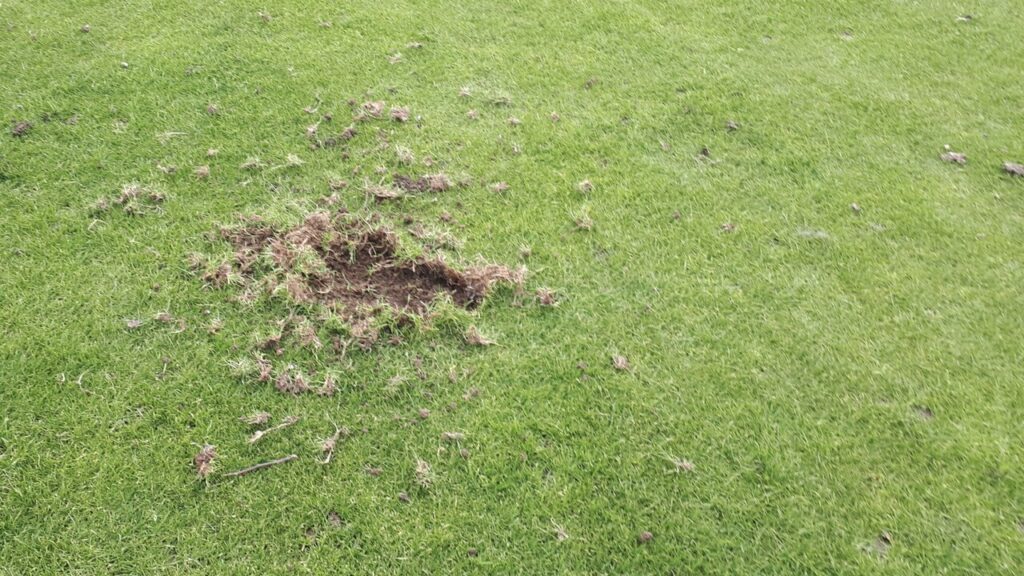Crane flies are becoming an increasingly worse problem. Milder winters coupled with the withdrawal of chemicals are making Crane fly even harder to battle. Over the last few years the population of the Crane fly has increased dramatically due to wet Autumns and mild winters. A small moderate population is fine, but left unchecked it will only grow. Now Crane flies feed off the roots of grass, causing leaf growth to stunt and the pulling out much easier. Not only this but subsequently birds love feeding on Crane flies and other forms of leather jackets. Pecking at the surface, bringing tatch and debris to the surface.

What areas of turf are more susceptible?
- High organic material and thatch
- Turf areas under stress
- Poorly maintained areas.
Signs of leatherjacket larvae within the soil
Patches of yellow, shallow rooted grass or/and patches of dead grass.
- Birds creating circular holes within the turf.
- Raised level of bird interest and time spent on the turf.
- Areas less wear tolerant, due to larvae feeding on roots.
- The periods of damage can be all year.
- Physical examination, lift some turf and take a look if you suspect larvae issues, you may see the larvae.
Options and control measures
- Keep organic matter and thatch levels to a minimum, via thatch reduction techniques such as a regular programme of verticutting, scarification and aeration which also helps break down organic matter.
- Boxing off clippings where possible, will also help control the food source.
- End-of-season renovation is vital, removing thatch and organic matter therefore lowering the food source.
- Nematodes applications during the peak period when the larvae are at their youngest i.e. during September/October. Possible options to re-apply in early spring. Very costly option and often only possible for small areas or large areas with high resources.
- The use of silage sheets, to bring up the larvae to the surface. The aim is to heavily water the areas the night before and then cover the area, then uncovered the next morning when the larvae will be active on the surface for removal (mowed or collected up). This method is currently being used to great success, especially helpful if areas of damage are small.
- Rolling of turf, during spring to areas with a history of damage, but not at the expense of compacting the soil and rootzone.
- Applications of garlic and silicon or similar products to aid recovery of the plant after attack .
- Limited use – Chemical control with the use of acelepryn, under emergency authorisation (only permitted to be used on golf or racecourse during specific windows in the UK).
- If a thick layer of thatch is present in the top of the profile, removal with a koro type machine is an option, again removing the food source.
Which of the above options is dependent largely on available resources and the size of the area affected, if only a small area applied there’s a greater deal of options for small clubs.
